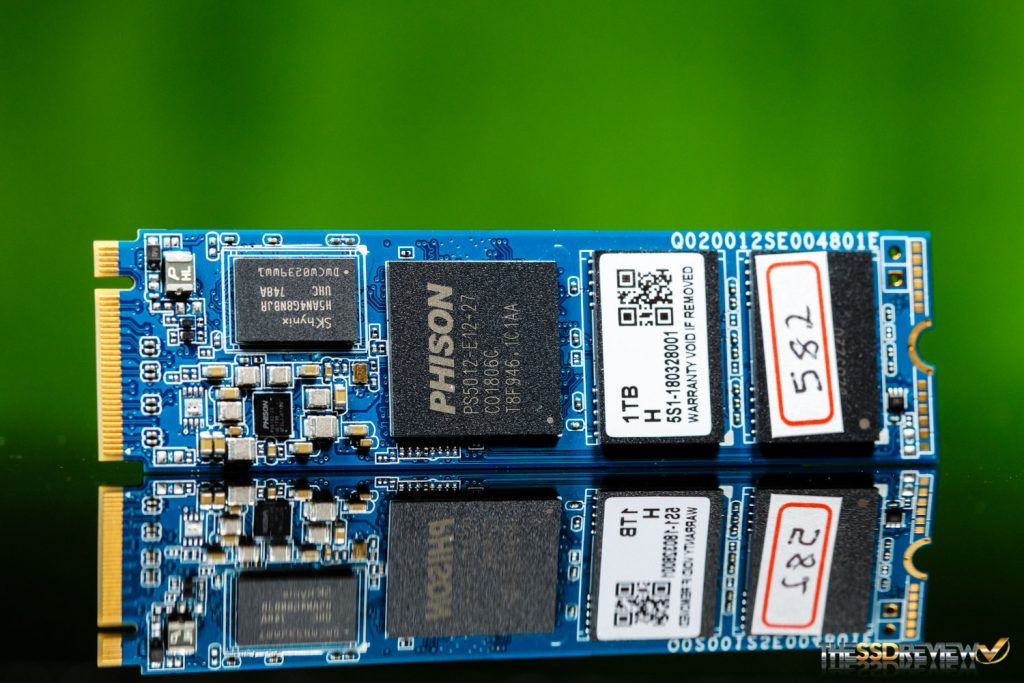As many of you know, Phison is a well accomplished SSD controller manufacturer. Over the years they have designed some very competitive turnkey solutions for those who don’t have the means to do it themselves, or, helped those who can save some money by simply buying their end product rather than develop their own. Back when SATA was all the rage, we fell in love with the Phison S10 controller. It offered some top-level performance and was seen in a multitude of SSDs that we’ve tested. That, however, was just the beginning.
As the SATA segment started to saturate, newer technologies started to come to light, and that is when the NVMe craze hit. Phison, being active in the industry, was ready for this. Soon Phison released a new NVMe PCIe 3.0 x4 controller. This new controller, the E7, offered top-tier performance and became a very popular option for third parties to utilize for their SSDs. It as well became a favorite of ours. Since then, we have been waiting for their next step in the market.
Luckily, we didn’t have to wait too long. The E8 was their next step, but it wasn’t an upgrade. With NVMe SSD pricing being so much higher than that of their SATA counterparts, and the trend of racing to the bottom being ever so much more important for sales, controller manufacturers, such as Phison, started to figure out ways to help drive down cost. One of them was simply to limit the PCIe lanes from four down to just two.
Over PCIe Express 3.0, this drastic cut to bandwidth actually isn’t so bad. While a two-lane controller offers half the potential performance of a four-lane counterpart, it still enables 3-4x the performance over SATA. This is where the new entry-level NVMe market starts to appear. MyDigitalSSD released their new SBX series and Kingston their A1000, both of which are powered by Phison’s E8 chip and both have done great in our reviews. But, this downward trend in performance is not the focus of today’s review or better-said preview.
Today, we are taking a close look at Phison’s newest creation, their PS5012-E12 controller. We first got a glimpse of it at CES this year and unlike the E8, the E12 is an upgrade from the E7 controller we’re used to seeing in high-performance NVMe SSDs. It is the E7’s, true successor. It promises design advancements and of course, performance enhancements that will soon enable almost anyone to manufacture an SSD that can compete in both performance and value metrics with the likes of Samsung, the big kahuna of SSDs at this time. Sounds great so far, right? We think so. If you’re anything like us and getting into the component aspects of SSDs get you going, keep on reading, because it’s about to get hotter.
SPECIFICATIONS
The PS5012-E12 SSD controller is built on a TSMC 28nm process node and communicates via PCIe 3.0 x4 interface and NVMe 1.3 protocol. Thanks to Phison’s SmartECC and new LDPC (Low Density Parity Check) error correction algorithms, the Phison E12 is ready for 3D TLC and 3D QLC NAND. It also supports up to 8 NAND channels and 32 NAND chip enable lines, which means it can support up to 8TB of NAND total, four times more than the 2TB the E7 could support before it.
Our engineering sample is paired with 1TB of Toshiba BiCS3 64-layer TLC NAND flash. It is a reference design that is a double-sided M.2 2280 form factor, just like what consumer products will look like. There are M.2 22110, U.2, and AIC form factor reference designs as well. The E12 utilizes a DRAM cache, our sample contains a 1GB SK Hynix DDR4 DRAM chip, but the controller is compatible with DDR3L DRAM if their customers want more flexibility in their design options. In addition to bringing LDPC support to this second generation PCIe 3.0 x4 controller, the Phison E12 supports Pyrite, AES256 and TCG OPAL hardware encryption.
We don’t have any other explicit features to talk about, but we can talk about performance. The sequential read and write speeds are rated for up to 3.2GB/s read and 3GB/s write. This write speed, however, is a burst rating, once the SLC buffer fills our sample dropped to about 1GB/s, which is still very good. Random read and write performance is rated for up to a blisteringly fast 600K IOPS. And as you will see in testing, this controller is able to close the gap on Samsung and Western Digital’s solutions. There aren’t any endurance ratings, but we will find out more as soon as we start to see finalized products in the coming months.
 The SSD Review The Worlds Dedicated SSD Education and Review Resource |
The SSD Review The Worlds Dedicated SSD Education and Review Resource | 

